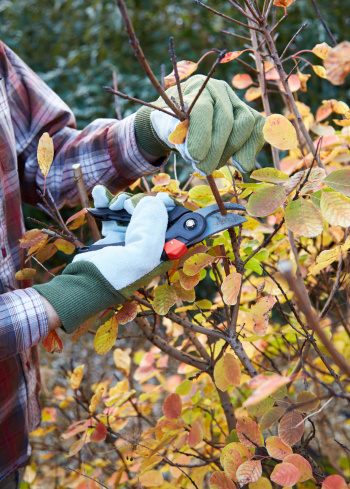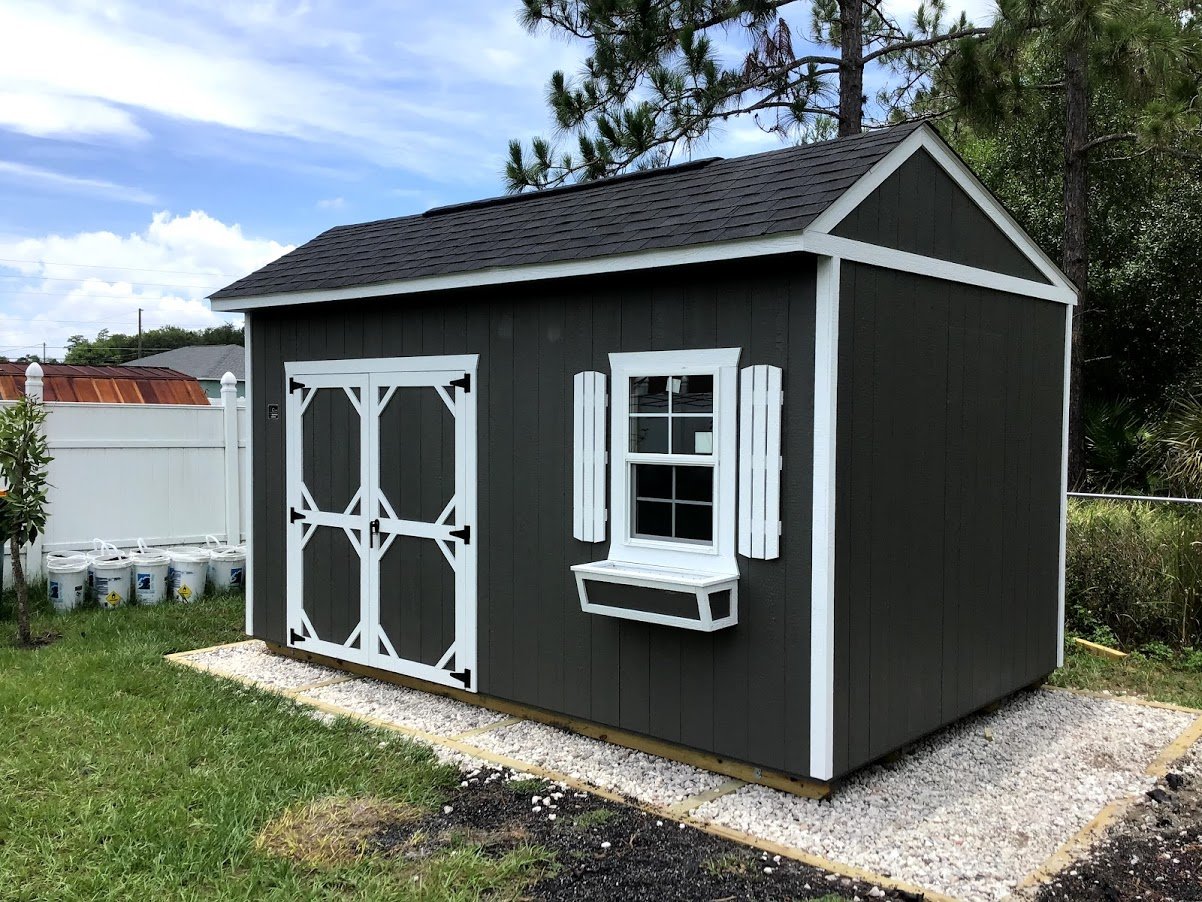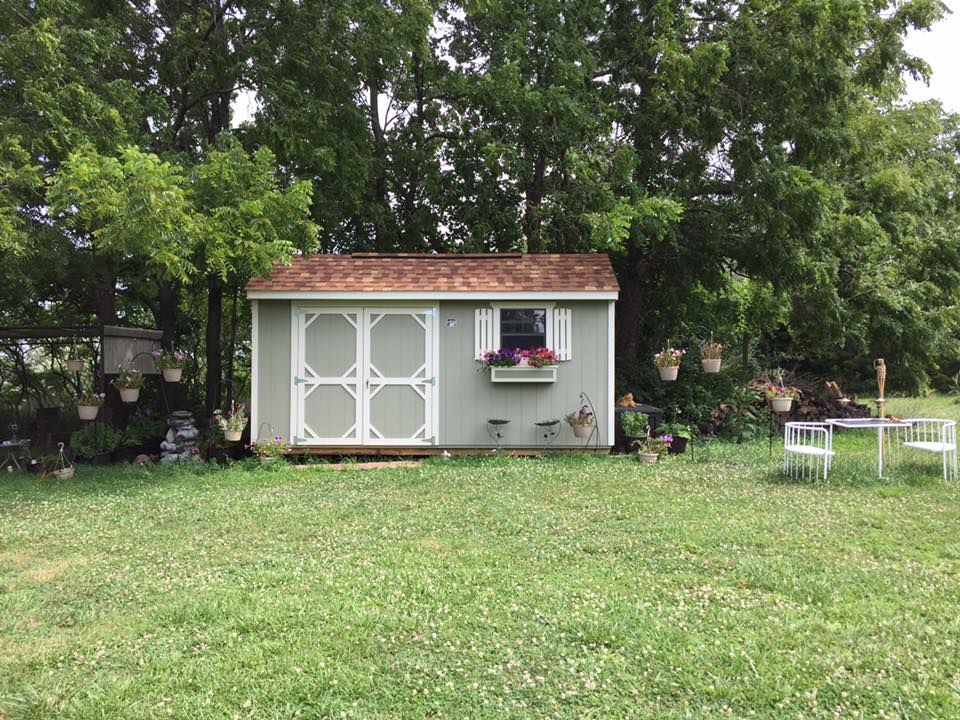
Fall is a great season to reflect on the success and failures of your garden through last spring and summer. Plus, cooler temperatures and fewer bugs allow for some last minute gardening and maintenance.
A great (and convenient) place to keep all those garden supplies and plants is in a Cook Portable Warehouse. One of our popular styles is a Garden Shed that comes with adorable shutters and a front flower box!

Here are 7 essential gardening tasks to complete this fall. Working outside is a fun way to enjoy the nice weather, get some exercise and prepare your garden for next spring!
Add an even layer of compost or manure to your garden beds. Freezing and thawing through the winter will help the compost get into the soil.
![]()
Collect dried seed from any pollinated flowers or vegetables that have opened and save these seeds for next spring. Remember to grab seeds from plants that you liked and definitely want to plant again. Seed companies occasionally discontinue seed varieties, so this is your insurance policy.
Also, take stem cuttings of your favorite plants and root them inside small pots. It’s easier to transport these cuttings inside rather than moving the entire plant.
![]()
Gather herbs, seed heads and some flowers to dry. Herbs with a lower moisture content like oregano, rosemary, bay and thyme work best for this. To get the best flavor, let the herbs air dry. Always cut more flowers than you want because some won’t make it through the drying process.
![]()
Get a head start on your garden clean-up by cutting back flowers and plants. Then bring them inside for some fresh, colorful and free decor!
You want to cut back most of your perennials. This includes all diseased portions of the foliage. Then, you will be ready to go this spring when they bloom again! Here is a helpful list of perennials to trim.
![]()
Remember to water trees and shrubs regularly until the ground freezes or for the entire winter if the season is mild. Water twice as much for any plants or trees that were planted within the last year. Even if the plant looks dominant, it is most likely still alive.
![]()
Don’t forget to prepare your water garden elements for winter weather. Any water gardens in small containers should be drained and stored. Natural water gardens and ponds can be left alone but should be monitored throughout the winter. Another good idea is to cover water elements with netting to keep leaves out.
![]()
Clean bird feeders so they are ready to go next spring. You want to encourage those birds to come back next year!
Also, clean out your used cold frames, structures that insulate young plants when the temperature drops. It’s easier to get this done before temperatures get too cold. Finally clean, sand and oil your garden tools and store them safely in your shed or portable building.

Want to find out more about which Cook building style could be right for you? Check out our free fitting guide to learn more!
{{cta(’75a28f37-49bf-469d-9d04-aee4dd4fa857′,’justifycenter’)}}
